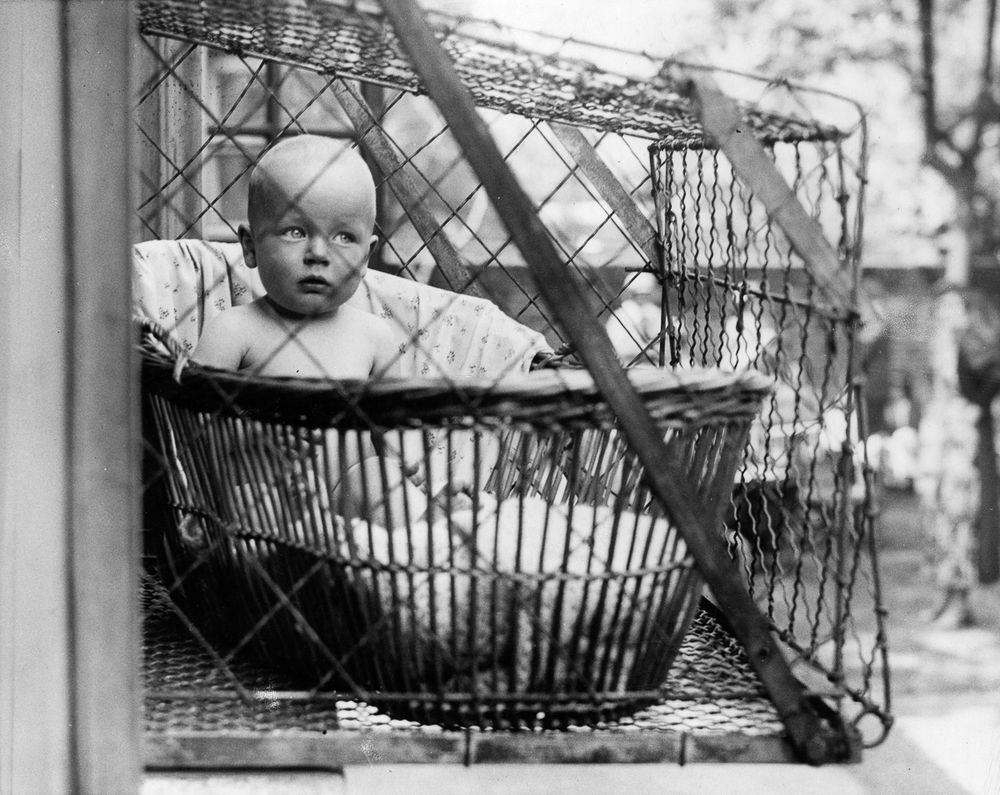It’s true—no one can go to the lengths that our parents cover for us. It’s truer that no one can go to the lengths that parents of the 20th century went to for their kids. These city folks hung their kids in baby cages by their window sills. Because something had to be done to provide their little ones with sunshine and fresh air in a land that was dense with smoke and concrete. Right?

What Does That Mean?
Baby cages were exactly what you would think them to be: mesh cages sized to fit infants. That, though, was not their most absurd quality. These cages were mounted on window sills and stuck out of buildings. There would be no foreign objects inside the cage; only infinite light and (as fresh as it could get) air. As terrifying as the concept was, it seemed better than rearing babies in sooty corners of cramped up apartments.
In 1906, Eleanor Roosevelt, who would go on to become the First Lady in a promising future, hung her baby Anna out the window of their house on East 36th Street in Manhattan in a chicken wire cage. Not for long though, for her neighbors almost called the Society for Prevention of Cruelty to Children. Clearly, the idea had not gained popularity back then. But by 1937, similar cages were being distributed in the Chelsea Baby Club of London, to members who resided in high rise structures that lacked any gardens. How was this polar opinion shaping up?

The History of Baby Cages
Believers of baby cageing probably read up some parenting tips in Dr Luther Emmett Holt’s 1894 book The Care and Feeding of Children. It was in this book that he introduced the concept of airing children “to renew and purify the blood.” If he were correct, “appetite is improved, the digestion is better, the cheeks become red, and all signs of health are seen” if you expose your child to fresh air. But in the labyrinth of pedestrian paths and cramped bylanes, where could a child find his share of nature? To answer that question, parents had to get creative.
Louis Fischer's 1920 book The Health-Care of the Baby mentioned a cage-like product that catered to city folks cramped in tiny apartments. It was a wire cage. In 1922, Emma Read of Spokane, USA made the idea come true. She applied for a patent on portable baby cages. These cages came with curtains that rolled down to hold out the chilly draft while the baby napped. Upon their waking, the curtains could be rolled up to let in fresh light and air. There was to be a slanted overlapping roof that would protect them against snow. Her patent was granted the next year.
By the 1930s this parenting product was a rage in London, far from its birthplace in the States. It wasn’t until the late 20th century that society awoke to the concerns of such a hazardous object. More caution was being heeded and somewhere along the lines, the innovative baby cages lost their credibility to the need for keeping kids alive.




References
# Portable Baby Cages by Emma Read
# NY Post
# Mental Floss
# The Atlantic
# Gothamist
# Dailymail












I wonder how many of these children grew up to have either a fear of heights, or a desire to work at heights, rock climb, etc.
ReplyDelete